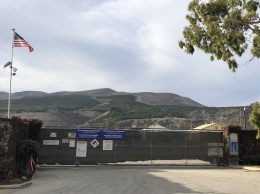Carson: Newsom’s housing penalty could backfire
IN THIS ARTICLE
- Higher Education Topic
- Guest commentary Author
By Guest commentary Friday, February 15th, 2019
By Loredana Carson
The new year and the new governor have provided a twist to the rhetoric concerning the state’s housing crisis. Unlike his predecessor, Gov. Gavin Newsom has included $1.7 billion for homelessness and housing issues in his proposed budget.
In addition to providing funding for cities in the form of grants to help local jurisdictions revise outdated zoning codes, the governor has proposed $500 million to be awarded to cities and counties that meet upward-targeted housing goals.
In order to increase the possibility that municipalities comply, Newsom has also proposed penalties, such as withholding transportation funds from those that fail to meet housing goals. Of course, the mention of these types of penalties could disappear before the May revise, but it bears reflection in the event it remains part of the final budget. This controversial idea could have unintended consequences and requires careful consideration before implementation.
It is unfortunate that the governor selected a domain that could carry profound financial implications but is, in fact, not controlled completely by cities or counties. Market forces and plans of the developers themselves contribute significantly to the ability of an area to reach its housing goals. In some places, such as in more rural parts of the state, there is little to no impetus for developers to build even though there is a need for more affordable housing because the commuting distance required to reach jobs with higher wages results in high transportation costs.
Locally, this lack of housing continues to loom as one of the major factors in predicting economic growth in the region. Without a significant increase in available affordable housing, Ventura and Santa Barbara counties will resemble poorer parts of the state due to increased transportation costs that burden individuals who must travel farther to secure high enough wages to live in these areas. Therefore, it is particularly important for residents of the region to understand the implications Newsom’s proposal would have for our area if adopted.
Other parts of the state, such as Los Angeles County, have been undertaking rapid and significant building, driven in part by the increase in funding for public transportation. Areas around the Metro rail in Los Angeles have seen increased construction of large-scale developments, often with both residential and commercial components. In Koreatown alone, last year saw upward of 52 separate new construction projects, many in and around the Wilshire corridor. Many of these projects are scheduled to be completed in 2019 and 2020 and will result in a new landscape for this part of the city.
New density laws allow for higher buildings and more units to be built in place of older two- and three-story apartments or business buildings. Almost all of the new buildings feature mixed-use components aimed at bringing amenities to these new housing units in the form of grocery stores, coffee shops, restaurants and other small businesses useful to residents.
These projects could allow Los Angeles to reach its housing targets and receive its transportation funds. This disproportionate impact would further place Ventura and Santa Barbara counties in a less than ideal situation in comparison, more as a consequence of the combination of geography and a desire to freeze time that may not accurately reflect the needs of future generations. In our desire to not resemble our neighboring county, we may not offer enough affordable housing to entice the next generation to raise their families in this area, thereby not providing enough employees for businesses that could consider relocating here to enjoy our quality lifestyle.
Perhaps if his decision is debated with clarity, the governor can select another stick with which to influence cooperation and not use something such as transportation funds that would doubly penalize areas such as ours that are so dependent on commuters.
• Loredana Carson is a lecturer in the California Lutheran University School of Management.
Related Articles
 Friday, October 14th, 2022
Friday, October 14th, 2022









